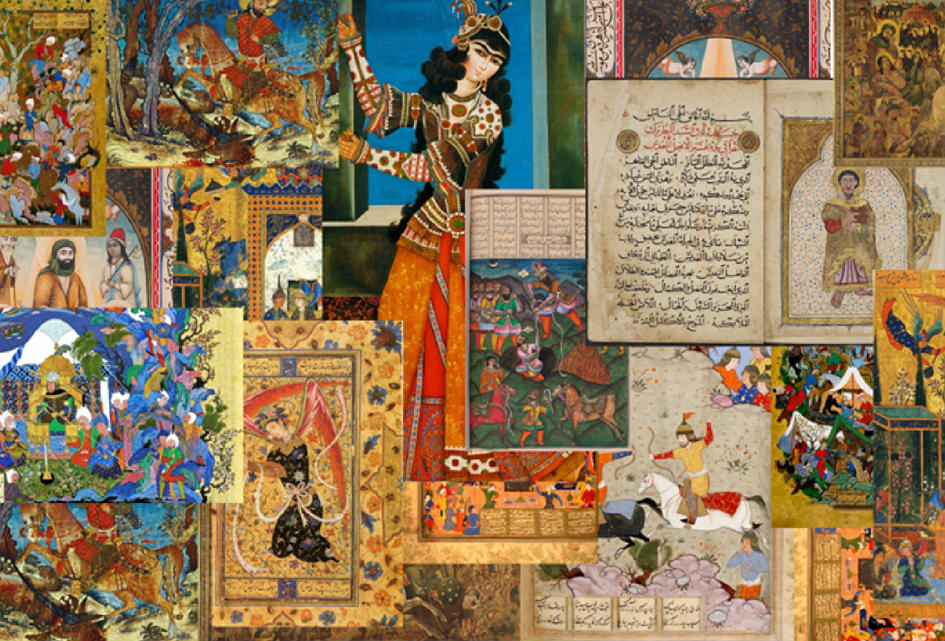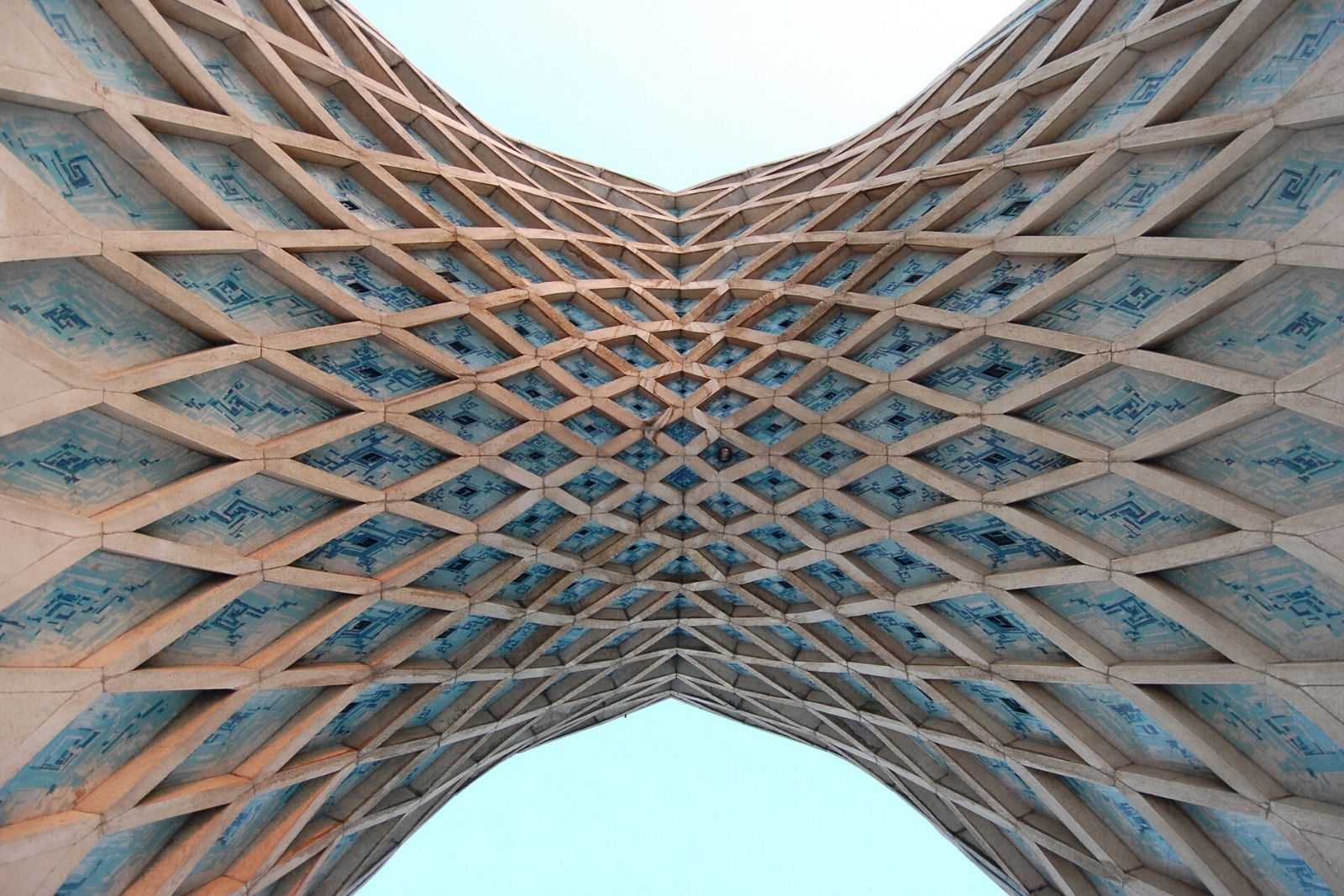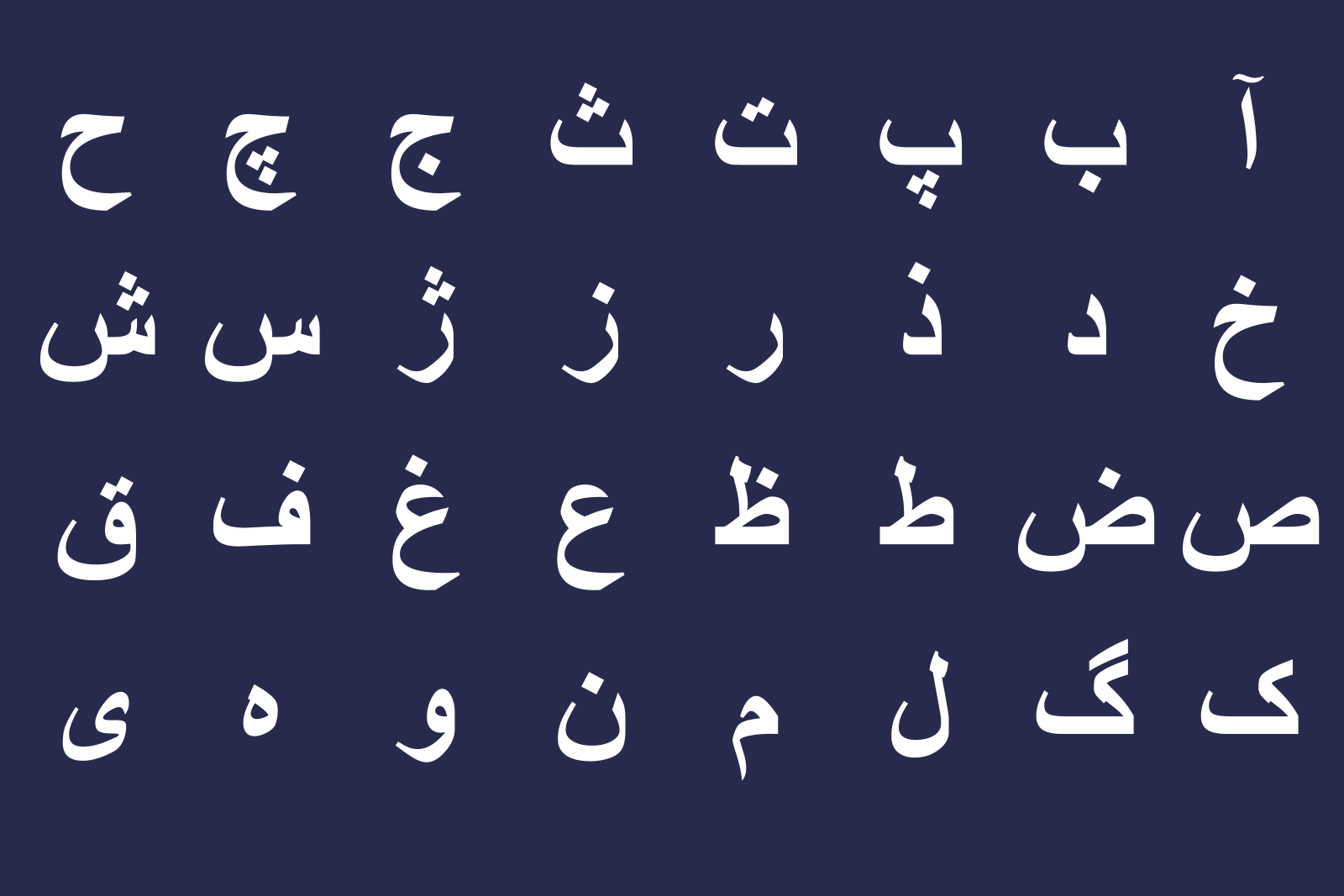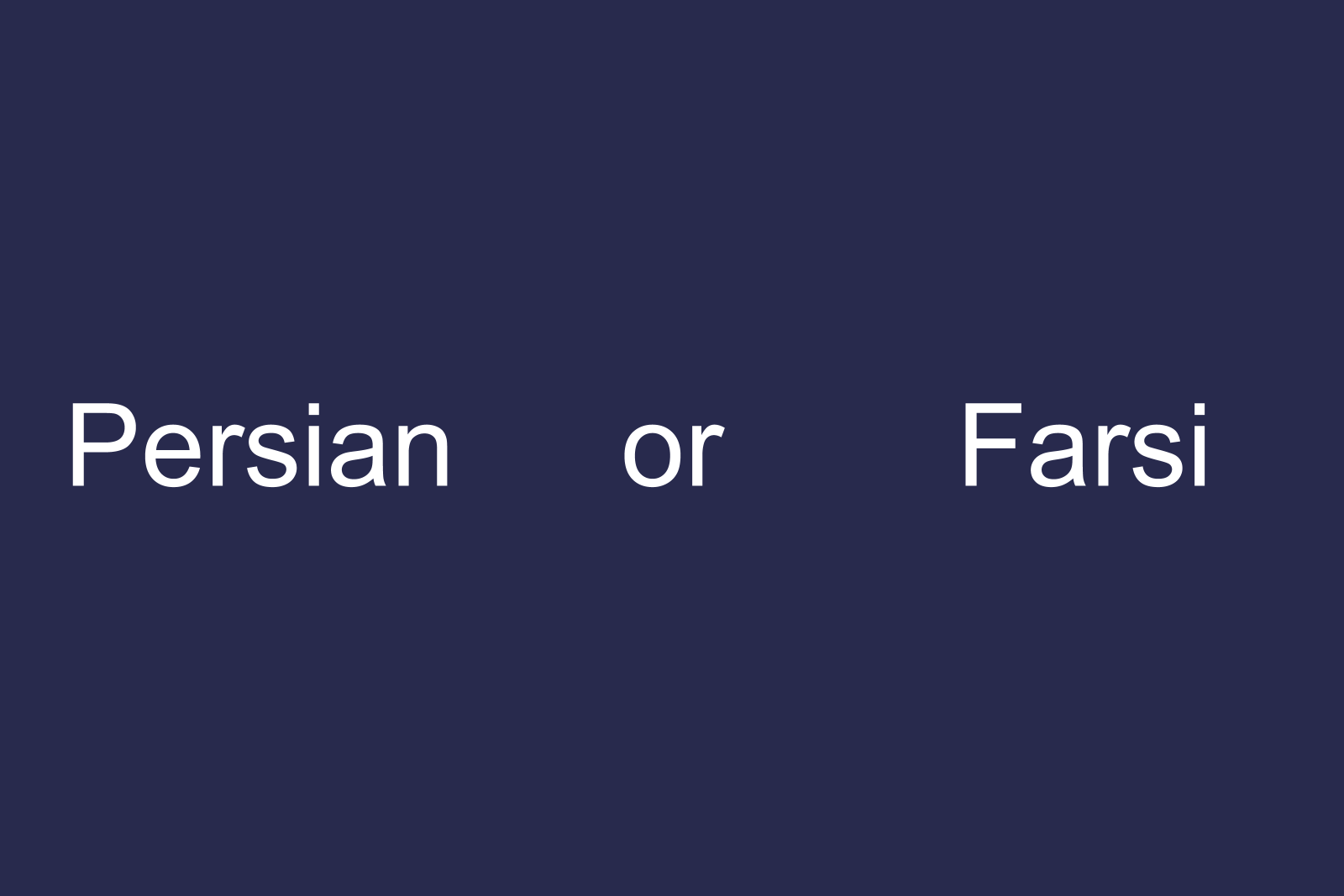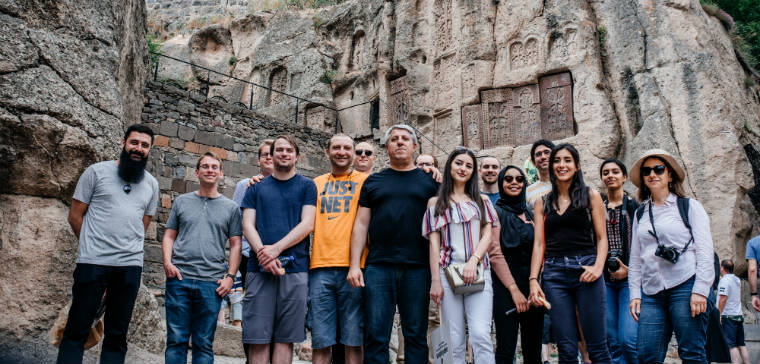Introduction
The Persian Empire remains one of the most interesting and important empires to have ever existed. It has morphed, adapted, fallen, and risen many times throughout the course of history over the past few millennia, but its influence is still felt to this day not only politically, but also culturally and religiously, with Iranian religions playing a major part in the development of many of the world’s major modern religions, such as Christianity.
What is the “Persian Empire”?
The “Persian Empire” commonly refers to the several Iranian empires that have existed since the creation of the first Persian Empire by Cyrus II in the mid-6th century BC.
The first Persian Empire was created by Cyrus II, more commonly known as Cyrus the Great, in the mid-6th century BC. The conquests of Cyrus the Great and the empire’s reorganization and consolidation by Darius I remain vivid memories in the Iranian historical consciousness to the present day. There have been several different dynasties that have been referred to as the “Persian Empire” throughout the centuries, and in this article we will go over the general history of all of them.
Where was the Persian Empire?
The boundaries of the various Persian empires have of course fluctuated throughout history, but in general it can be stated that the core of the Persian empires roughly correspond to the territories of modern-day Iran and Iraq, as well as parts of Tajikistan, Turkmenistan, Afghanistan, and other countries.
The Portrayal of the Persian Empire in Video Games
The Persian Empire has not only captured the attention and imagination of historians and archaeologists, but it has also been featured in many forms of popular media, including video games. It is perhaps most famous for its importance in the popular series of strategy games called Civilization (1991-present). In Civilization (from its first iteration to the present one, Civilization VI), you have to lead your chosen civilization throughout the various eras of history by developing your cities, military, technology, and culture. Persia has been a playable civilization since Civilization II in 1996, and all of its leaders have been from the Achaemenid period (Cyrus the Great, Darius the Great, or Xerxes I, depending on the iteration). In Civilization II, the player can also choose a female leader for the Persians, Scheherazade.
It has also been portrayed prominently in the popular Total War series of video games. In Rome: Total War (2004) and Total War: Rome 2 (2013), Parthia is one of the main playable factions featured. As one of Rome’s main historical nemeses, the player has the choice of leading the Parthians to victory against various other kingdoms of the time, including the Seleucid Empire, Pontus, and Armenia. The Sasanian Persian Empire is playable in the late Roman period Barbarian Invasion expansion for Rome: Total War, as well as in 2015’s Total War: Attila. The Persian Empire of the 18th century is also depicted in 2009’s Empire: Total War, though they are not playable in that iteration of the series.
Of course, these are not the only games featuring the Persian Empire. There are several others, including the popular Age of Empires series. All in all, video games are a great way to introduce people to the military and political history of the various Iranian empires and their contemporaries.
Achaemenid Empire (550BC-330BC)
The Achaemenid Empire is the first and most famous of the Persian empires, due to their inclusion in popular media such as the film and comic series about the 300 Spartans that fought at Thermopylae, as well as the important role of some of their kings in the Bible.
Before the Persian Empire: The Medes and Elamites
It should be noted that the first Persian empire was not the first Iranian state to ever exist, and perhaps not even the first Iranian empire. The first historical Iranian “empire” was that of the Medes, who, famously, together with their Babylonian allies, took down the once-mighty Neo-Assyrian Empire and brutally destroyed their capital, Nineveh. Unfortunately, our knowledge of the Median Empire is sketchy at best – we have no primary sources from them and sites that are known to have definitely been Median political and cultural centers, including the capital Ecbatana (modern Hamadan), have not been excavated to the point of uncovering the Median layer (8th-6th centuries BC). Our knowledge is so scanty that it is in fact controversial to call this Median state an empire, since pretty much everything about the history of this state is unclear and contradictory. However, even after their defeat at the hands of Cyrus the Great and the Persians, the north Iranian Medians remained an important socio-political force within the first Persian Empire and played an important role in its formation and development.
There was also an important civilization located in the Persian heartland (the modern province of Fars): Elam. The Elamite civilization thrived in southern Iran for over two millennia prior to the arrival of the Persians. Elam had its own pantheon, its own royal ideology, its own version of the Sumero-Akkadian cuneiform script, and, most importantly, its own language, which was not related to Sumerian, Semitic, or Indo-European. The Persian kingdom was essentially founded upon land where the Elamites had reigned supreme for thousands of years, and Elamite influence on early Persian royal ideology and culture cannot be understated. When Cyrus the Great entered Babylon, he did so in Elamite garb.
Who Founded the Persian Empire?
The first Persian empire, commonly known as the Achaemenid Empire, is also perhaps the most famous. This empire is the most well-known to modern audiences due to its important role in parts of the Old Testament (most notably Cyrus the Great’s liberation of the Jews from the Babylonian Captivity), the Persian invasions of Greece and the Battle of Thermopylae, as well as its spectacular defeats and collapse during the campaigns of Alexander the Great of Macedon. The Achaemenid Empire was also the largest of the various Persian Empires, and its vast territories spanned from Pakistan to Thrace, Egypt to Central Asia, where Cyrus the Great even founded a city along the border, naming it after himself (Cyropolis).
The Kings of Persia
The empire of Cyrus the Great was the largest the world had ever seen, and his son and successor, Cambyses II, would continue this expansionist policy by conquering Egypt. Upon the death of Cambyses II, the young empire fell into chaos as a noble named Darius (Old Persian: Darayavahu) would rebel against the king Bardiya and massive rebellions ensued all across the land. This civil war was the crucible that truly consolidated and created the Achaemenid Empire – it is in fact at this time that the term Achaemenid is first used. Darius also ordered for the creation of a writing system for Old Persian, which was the language of the court. The first and most important text in this language is the Behistun Inscription, which is essentially a chronicle detailing the victory of Darius I over the many rebellions that occurred upon his accession to the throne. The Behistun Inscription is a trilingual text (though copies of an Aramaic translation also exist) in Old Persian, Akkadian, and Elamite. This text was essentially the Rosetta Stone for cuneiform languages. Darius’ son Xerxes succeeded him, continuing his father’s expansionist policies. The later kings of the Empire mostly focused on internal affairs and did not concentrate as much on expansion as their predecessors did, and the Achaemenid Empire prospered for decades.
The Language of the Achaemenid Empire
Despite being the language of the court, Old Persian was not the main administrative language of the Achaemenid Empire. Compared to the later empires, we have significantly more administrative data from the Achaemenids due to the incredible discovery of the Persepolis archive, which contained thousands of clay tablets recording transactions and other information about the administration of the empire during the reigns of Darius I and his son Xerxes. There is exactly one tablet in Old Persian. The vast majority of the tablets included in the archive are actually in Elamite, which had of course been the administrative and court language of the previous kingdom of Elam. There are also a few tablets in a few other languages, including Greek. Some of the tablets also have writing in Aramaic on them. Despite the bulk of the archive containing documents in Elamite, most of the administrative texts of the empire were probably in Aramaic. Unfortunately, Aramaic was written mainly on perishable materials, and the vast majority of these texts have been lost.
Religion in the Achaemenid Empire
The religion of the Achaemenid Empire is a topic of much discussion in academia. The official religion was Zoroastrianism/Mazdaism. We do not have explicitly religious texts in the corpus of Old Persian texts, but the royal inscriptions are full of religious exhortations, prayers, and references. Cyrus the Great actually never references Ahura Mazda or anything related to the Zoroastrian religion in his Cyrus Cylinder royal inscription (or in any of his other minor texts). Darius I is the first king of Persia to mention Ahura Mazda in any capacity, and in fact he only references Ahura Mazda and none of the other Zoroastrian deities. However, this does not mean that the other Zoroastrian deities such as Anahita, Verethragna, or Mithra were not important yet. In the aforementioned administrative texts, there are an abundance of personal names that include theonyms that are not Ahura Mazda. The administrative texts also provide us with important data regarding the treatment of different religions by the courts of Darius I and Xerxes. They record that the royal court did provide significant donations and supplies to the temples of Babylonia and Elam, in addition to supporting the Zoroastrian magi. Thus, it can be stated that supporting local non-Iranian religions was also important for the Achaemenid kings.
The Persian Wars
The Greco-Persian Wars are quite well-known in modern popular culture since they are the subject of the rather popular “300” movie and comics franchise. Just to be clear - no, Xerxes was not a bald giant who only wore underpants as depicted in the film. Now that that’s out of the way…
What caused the Greco-Persian Wars?
After consolidating his new empire, Darius I embarked on campaigns of expansion. Amongst these were unsuccessful campaigns against the Scythians north of the Black Sea as well as campaigns across the Aegean Sea against the Greeks. The conflict between the Achaemenids and the Greeks started due to the Ionian Revolt (498-490BC). The cities of Ionia, located on the eastern coast of Asia Minor, were mainly populated by Greek settlers. These cities proved to be difficult to control for the Persians. The tyrant of the Ionian city of Miletus, Aristagoras, who ruled the city on behalf of the Persians, feared that the Achaemenids were going to remove him from his position, prompting him to fan the flames of revolt in Ionia against the Persian Empire. This caused the Ionian Revolt that brought Greece into conflict with the seemingly invincible Persians, who had conquered most of the known world at the time. Darius I sent his troops in to quell the rebellion, and the Ionians called in the support of the cities of Athens and Eretria. Despite some minor successes at the start of the war, the Ionians were eventually crushed in a series of decisive defeats on land and at sea. Not satisfied with his victory, Darius wanted the Greek cities of Eretria and Athens punished for their support of the anti-Persian rebellion. His forces invaded Greece, first landing at Eretria on the island of Euboea and plundering the city, even deporting its inhabitants to the interior of the Persian Empire, resettling them near Susa in Elam. This left Athens, the fledgling democracy, to face the large Persian expeditionary force at the plain of Marathon in 490BC. The remarkable victory of the Athenians repelled the Persians for a decade and helped preserve the independence of not only Athens itself, but also the other cities of mainland Greece. Xerxes, the son of Darius, would invade Greece again about a decade later, but this invasion would also be repulsed by a coalition of Greek cities. This second invasion was when the Battle of Thermopylae took place, when a force of 300 Spartans tried to hold off the entire Persian army. Following this battle, the Greeks were able to destroy the Persian fleet at the Battle of Salamis, which prevented Xerxes from resupplying his land forces. These difficulties combined with yet another defeat on land again caused the Persians to retreat from mainland Greece.
Who Conquered the Achaemenid Empire?
There was a small kingdom in northern Greece that had mainly been neutral or Persian-aligned during the Greco-Persian Wars - Macedon. The Kingdom of Macedon, with its capital at Pella, was a sort of backwater for the ancient Greeks. However, it became incredibly important and powerful with the reign of the ambitious Philip II. Philip moved against the major cities of mainland Greece, conquering and uniting most of them. He then prepared his reformed army to go on an expedition against the mighty Achaemenid Empire. He would die before embarking on this task, and so it was left to his son, Alexander the Great.
Alexander marched against the Persians, defeating them in battle after battle, at the Granicus, at Issus, and, most critically, at the battle of Gaugamela, where the power of the Achaemenids was broken. Alexander conquered almost the entire Iranian world, with only a few satraps maintaining their independence in the face of the new Macedonian Empire. Alexander would die young in his capital at Babylon, before he was truly able to consolidate his gains.
Parthian Empire (247BC-224AD)
The Parthian Empire was not a “Persian Empire” per say. The Parthians, like the Medes, were a north Iranian people who spoke Parthian, a North Iranian language. However, due to being so long lasting and having such a major impact on the history of Rome, it is one of the most famous of the Iranian empires.
The Creation of the Parthian Empire
Following the death of Alexander the Great, the empire he had created swiftly became the battleground of several ambitious generals and former Achaemenid satraps. The bulk of the former Persian lands came under the control of Alexander’s general Seleucus I Nicator (after a series of conflicts), who founded the Seleucid Empire. Some Achaemenid satraps and nobles were also able to carve out their own polities, including in Pontus, Atropatene, and Armenia, while others remained as satraps within the Seleucid Empire. One of the most important satrapies was Parthia, located in northern Iran and southern Tajikistan. In the mid-3rd century, the Parthians under King Arsaces I were able to declare independence and take significant territories from the Seleucids. There would be a back and forth with the Seleucid Empire for decades, but by the mid-2nd century the conflict was all but decided and the Parthians had taken back the core Achaemenid territories, including Persis and Babylonia.
The Language of the Parthian Empire
The Parthians spoke Parthian, which was a north Iranian language. This is in contrast to Old Persian, which was a southern Iranian language spoken in Persis, which roughly corresponds to the modern province of Fars. Parthian became the administrative language of the empire. Unfortunately, it was largely written on perishable materials. We do have several examples of Parthian writing on monumental rock inscriptions, as well as on ostraca from the old Parthian capital of Nisa. It was written utilizing a variation of the Aramaic alphabet.
The Religion of the Parthian Empire
The official religion of the Parthians was probably Zoroastrianism/Mazdaism. Unfortunately, we do not have much concrete data regarding official religious practices in the Parthian Empire. Much of what we know comes from the numismatic evidence, which often show typical Zoroastrian fire altars and other related imagery. The Parthians were heavily influenced by the Hellenistic world, much like the other Achaemenid successor states Pontus, Armenia, and Cappadocia, and they equated many of the Iranian gods with Hellenistic counterparts (Ahura Mazda with Zeus, etc.).
The Roman-Parthian Wars
Aside from the short-lived rise of the Armenian king Tigranes II in the first half of the 1st century BC, the Parthians were the dominant power in the Near East, quarrelling constantly with the Romans, who had expanded rapidly in the east following their eventual victories against the Seleucids and Pontus in Greece and Asia Minor. The Romans did indeed have their eye on conquering more territories in the East, but their advance was checked in the famous Battle of Carrhae, which saw the Roman legions of Crassus crushed by a more mobile Parthian force largely consisting of horse archers in 53BC․ The Romans and Parthians would clash several more times after Carrhae, with significant victories for both but without any major breakthroughs for either side. The Parthians were famous for their cavalry, including their horse archers and heavily armored cataphracts.
Sasanian Empire (224-651)
The Sasanians are famous for their art, culture, and for being a stubborn enemy of the Romans into the Byzantine period, fighting a series of brutal wars against them until the ultimate victory of Emperor Heraclius in the 7th century.
Who Founded the Sasanian Empire?
The Parthian Empire was a strong state, but it eventually collapsed due to internal conflicts. Ardashir I, of the Sassanian dynasty, was able to successfully rebel against his Parthian overlords and again established Persian supremacy in the Iranian world. Ardashir I came from a long line of satrapal kings of Persis, the modern region of Fars in southern Iran the Persians called home. His family had reigned there since the days of the Seleucids as vassals, and they claimed descent from the Achaemenids.
The Language of the Sasanian Empire: Middle Persian (Pahlavi)
The Sassanians introduced a new language of administration: Middle Persian. Middle Persian is similar to Parthian, but it is a direct descendant of the Old Persian language of the Achaemenids rather than a North Iranian language like Median and Parthian. At the beginning of the Sasanian period, monumental royal inscriptions were written in both Middle Persian and Parthian, the language of the preceding Iranian empire, but eventually Parthian completely fell out of use and Middle Persian became the main state language of the Sasanian period. Unfortunately, like Parthian, Middle Persian was mainly written on perishable materials, and the vast majority of the texts written in it have been lost.
The Religion of the Sasanian Empire
However, we do have several documents in Middle Persian that are of extreme importance for preserving and reconstructing pre-Islamic Iranian culture. While we do not have explicitly religious texts from the Achaemenid or Parthian periods, there are some incredibly important texts and translations that start have been preserved in Middle Persian. The holy book of Zoroastrianism, the Avesta, was probably codified in the Sasanian period, and copies in the Avestan language (which was not previously written) were probably first made at this time. Translations, commentaries, as well as original religious texts were written in Middle Persian, and several of them have been preserved, such as the Bundahishn. If not for the Sasanian period and the copying down of several important Zoroastrian texts, we would probably know even less about this important pre-Islamic Iranian religion.
The Wars of the Sasanians
Militarily, the Sasanians were quite powerful, and they had to be, in order to fend off all the threats to their power on all sides. The Romans to their west were a constant source of problems, while their eastern border was no less dangerous with the Kushans and the Hephthalites (the “White Huns”) often attacking. At their peak, the Sasanians were able to capture Egypt, the Levant, Armenia, and much of Asia Minor from the Byzantine Empire in the early 7th century AD. However, by 628, Emperor Heraclius of the Byzantine Empire was able to force the Sassanids to retreat from all the territories they had gained earlier in the war.
Arab Conquest and smaller dynasties (642-1501)
After the Sasanian period, Iran had to wait a number of centuries before another dynasty could truly claim the title “Persian Empire.” This period was marked by the Arab conquest of Iran, the conversion of most of the country to Islam, the subsequent Turkic and Mongol invasions, and the flourishing of Persian literature.
The Arab Conquest of Iran
The Sasanians did not get any respite following their defeat at the hands of the Byzantines in the 7th century. They were invaded by a new foe – the Islamic Rashidun Caliphate. The army of the Caliphate defeated both the tired armies of the Byzantines and the Persians, they defeated the latter so thoroughly that the Sassanian Empire completely collapsed. Iran came under foreign control once again.
The Creation of the Persianate
The Caliphate did not remain unchallenged forever, and eventually Iran came under the control of an assortment of dynasties that each left their impact on Iranian culture and politics. The Saffarids were the first native Iranian dynasty to create a strong empire as the Caliphate weakened in the 9th century. The Ghaznavids and Ghorids in Eastern Iran were quite powerful, and the Khwarezmshah became quite a large power that controlled most of the core Iranian territories until getting wiped out by the Mongols. As more and more parts of Iran broke free from the control of the Caliphate, more and more dynasts began to utilize the Persian language as the language of the court. This led to the rise of Persianate society across a large swath of land where all the polities and peoples utilized Persian as the lingua franca. Many different groups interacted within the Persianate, including Armenians, Arabs, Turkmen, Assyrians, Chaldeans, and others. They all used Persian to communicate with one another. Even several non-Iranian dynasties utilized Persian as the language of the court, including the Seljuk Sultanate of Rum and the Ghaznavids.
The Rise of Islam in Iran
This was an incredibly important period for the development of Iranian culture and religion. The Achaemenid, Parthian, and Sasanian empires were world superpowers and fostered the development of a unique Iranian culture and religion (Zoroastrianism/Mazdaism), but everything changed after the Arab conquest. The state religion of the Iranians, Zoroastrianism, declined rapidly due to a combination of persecution and infighting. The Middle Persian language, which was the language of both the administration as well as for religious texts (not the scripture, which was in Avestan) in the Sasanian period, declined rapidly as well along with Zoroastrianism. As Zoroastrianism declined, Islam rose, and with the fall of the local Zoroastrian princes that reigned in Tabaristan in the 8th century fell the last region where Zoroastrianism was the state religion. In addition to pressure from the Caliphate to convert, the Zoroastrian religion also suffered from significant infighting that led to its swift fall. This does not mean there are no Zoroastrians left - there are still thousands of them around the world.
The Creation of Persian Literature
Perhaps the most important work of Persian literature was written in this period: the Shahnameh (The Book of Kings). Ferdowsi, a landholding Iranian nobleman from a family that had its roots in the Sassanid period, utilizing stories, histories, and legends that are now otherwise lost, wrote the epic Shahnameh in order to recount and glorify the deeds of the old kings of Iran, from the beginning of its history to the Sassanid period. Following Ferdowsi, there was a renaissance in Persian literature, with several Persian poets and authors of the age, such as Omar Khayyam and Rumi, remaining famous worldwide to this day.
Safavid Empire (1501-1736)
Following a long period of foreign rule, smaller dynasties, and no true “Persian Empire,” Iran was united again by the Safavid dynasty. These kings would again use the term “Iran” to describe their empire, and their reign truly marked a return of the Persian Empire.
The Persian Empire Strikes Back: Ismail I
The Safavid dynasty was of Kurdish origins. The first shah of the Safavid Empire, Ismail I, is notable for converting the country to Shia Islam. Iran remains a majority Shia country to this day, while most Muslim countries are Sunni. This was a major development that has had important socio-political consequences for Iran. Ismail and his successors were also able to reassert the Iranian identity in several parts of Iran that had been dominated by Turkic warlords for a significant amount of time.
The Wars of the Safavids
Safavid history is marked by a series of conflicts with their western neighbors, the Ottoman Empire. This was a period when the Ottoman Empire seemed invincible, as they had crushed the Byzantines, the Hungarians, the Serbs, and several other kingdoms completely. However, the Safavids were able to hold their own in most conflicts, though they did lose parts of Armenia to the Ottomans in the 16th century. Eventually, the Safavids declined and their power was pretty much destroyed when a rebellious Afghan army successfully conquered the Safavid capital of Isfahan after a six-month long siege. While two Safavid monarchs reigned after this massive defeat, their power was never the same.
Persian Literature in the Safavid Period
Literature in Persian essentially underwent a renaissance in the centuries prior to the rise of the Safavids and a unified “Persian Empire.” One of the reasons for this is that there were several dynasties active in Iran in the prior centuries that all utilized Persian as their court language, and they were all essentially possible sponsors of various writers and poets. With the rise of the Safavids, there were no longer several courts sponsoring works and thus there are fewer famous authors from this period. The most famous writer of this period is Saib Tabrizi, who composed several ghazal poems.
Qajar Dynasty
The Afsharid dynasty led by Nader Shah followed the Safavids as the major power of Iran. He is known as one of the greatest Iranian military leaders of all time for his successes on the battlefield against all of Iran’s foes. However, his campaigns were extremely expensive and plunged Iran into economic chaos. The Zand dynasty followed the Afsharids as the most powerful kingdom in Iran, though their rule was rather short-lived and they lasted less than fifty years (1751-1794). The Qajars, a dynasty with Turkic origins, took control after these two short-lived dynasties.
Who Were the Qajars?
The Qajars were a tribe of Oghuz Turks that lived in northwestern Iran. The founder of the Qajar Empire, Agha Mohammad Khan Qajar, was an ambitious tribal leader who was able to depose the last Zand king in 1794. Following this, he launched a successful campaign to destroy the remnants of the Afsharid dynasty in 1796, uniting all of Iran under the Qajar banner.
The Wars of the Qajars
Agha Mohammad Khan Qajar was not the nicest ruler, and one of his last acts as king was the brutal sacking of Tbilisi, the capital of Georgia, following his victory against the Georgians in the battle of Krtsanisi, deporting thousands of people. The Qajar period was marked by conflicts with the Ottoman and Russian Empires. While the Qajars were able to hold off the Ottomans, they suffered significant setbacks against the Russians, losing Armenia and other regions in the south Caucasus during the 19th century. The most devastating of these losses was in 1828.
Persian Literature in the Qajar Period
The Qajar period produced more Persian literature than the previous few dynasties. Many of the kings themselves were well-versed in poetry and prose and wrote themselves. The most important innovation was the introduction of the printing press in Iran during the Qajar period. This catapulted Persian literature from the realm of expensive and time-consuming hand-copied manuscripts to printed books. There were many popular works in this period, including a version of the amusing Čehel Ṭūṭī, which tells the story of a merchant’s wife and her parrots.
The Iranian Revolution and Constitutional Reforms
The spread of print media also saw the spread of such ideas as nationalism and democracy, and this put extreme pressure on the conservative monarchy of the Qajars. Nasr al-Din Shah Qajar resisted the implementation of any reforms for his entire reign, which lasted from 1848-1896, when he was assassinated. His successor, Mozaffar al-Din Shah Qajar, gave in to the pressure and approved of a constitution in 1907 that weakened the king. His successor did try to fight against these reforms after the fact, but those efforts eventually failed.
The Pahlavis
The Qajar dynasty was further weakened in 1921 after a coup by a military commander, Reza Khan, better known as Reza Shah Pahlavi.
Who Founded the Pahlavi Dynasty?
The coup in 1921 weakened the Qajar dynasty even further. Finally, in 1925, the constitution was amended to state that the members of the Pahlavi dynasty were in fact the rightful kings of Persia. Reza Khan was formally crowned Reza Shah Pahlavi. The reign of Reza Shah was marked by significant reforms throughout Iran. Perhaps one of his most important actions was the cancellation of the Anglo-Persian agreement signed by the Qajars in 1901 that gave the British control of the oil in Iran. This severely weakened the British position in the country.
The Name of Iran
The name “Iran” had been used by the Persian empires themselves for centuries, since the Sasanian period. However, most other states utilized the old Greek “Persian Empire” when referring to these Iranian empires. Reza Shah Pahlavi officially made foreign powers refer to Iran officially as such. The term Persia technically only refers to the modern-day region of Fars in southern Iran, which was known as Parsa to the Achaemenid Persian kings. Persia was simply an inaccurate term to use to describe the entire country of Iran.
The Flag of Iran
The Three-Colored Flag of Iran was standardized during the Pahlavi Dynasty. It consists of three bands of green, white, and red (from top to bottom). The takbir is written in white between the bands. During the Pahlavi Dynasty, the plain flag with just the three colors was often used, but eventually the Lion and Sun were placed in the center. With the Islamic Revolution in Iran in 1979 that overthrew the Pahlavi dynasty, the central emblem was also changed to a monogram of the sentence “There is no god but Allah.”
The Persian Language in the Pahlavi Period
Following the collapse of the Sasanian dynasty, many Persian speakers began to use a number of loanwords from other languages, mainly Arabic. Over the centuries, the number of loanwords increased significantly. With the rise of Iranian nationalism, many intellectuals clamored for the creation of an academy for the “cleansing” of the Persian language. Thus, in 1935, Reza Shah ordered the creation of the Academy of Persian Language and Literature, which standardized Persian orthography and removed many foreign loanwords. It continues its activities to this day.
Religion in the Pahlavi Period
The Pahlavi period was marked by an increased secularization of the country. In the 60s, Mohammad Reza Shah enacted several laws that antagonized many religious leaders in the country, including Ayatollah Khomeini. In 1962, the king passed a law that allowed Jews, Christians, Zoroastrians, and Baha’i officials to take their oath of office using their own holy books rather than the Quran. In 1963, as a part of the White Revolution reforms, Mohammad Reza Shah gave women the right to vote. This last reform enraged the religious leadership to the point of trying to stage a coup as well as several assassination attempts, which initially failed.
The Fall of the Shah
Reza Shah Pahlavi was overthrown by a combined British and Soviet invasion in 1941. His son, Mohammad Reza Shah, then took the throne. However, the new king could not prevent the discord that would arise due to further foreign imperialist influences. In the early 50s, the Iranian Prime Minister Mossadegh sought to nationalize Iran’s oil reserves, which Mohammad Reza Shah believed would lead to conflict with the West. Thus, to appease the western powers, Mohammad Reza Shah cooperated in a coup organized by the CIA in 1953 that removed Mossadegh from power. In the years that followed, Mohammad Reza Shah would antagonize local religious leaders as well, including Ayatollah Khomeini. In 1979, the Islamic Revolution led by the latter would toppled the Pahlavi dynasty for good.

